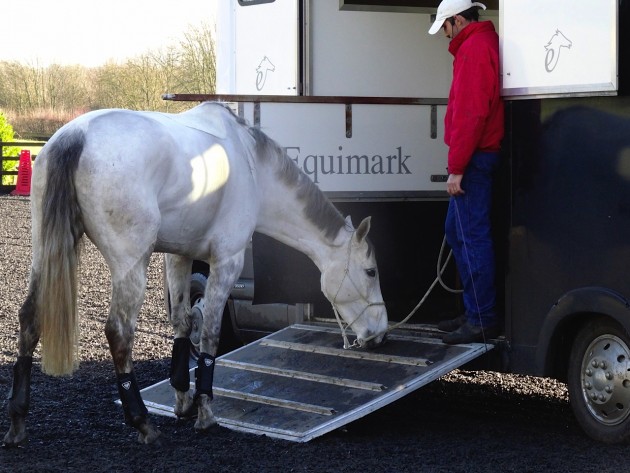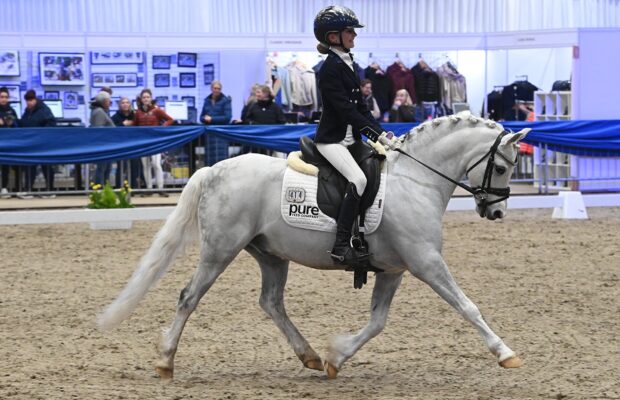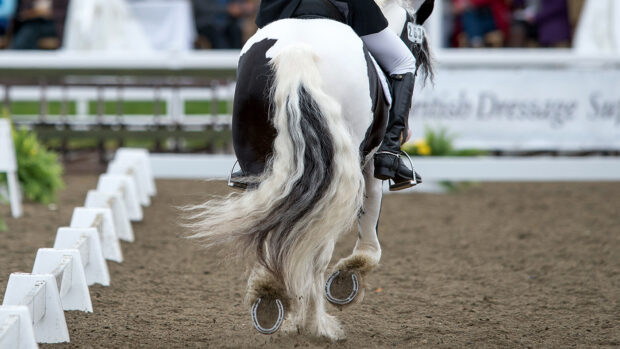We’ve well and truly got into the swing of 2015 now and I even have to forgive all the rain last week as it gave me a new training tool in the form of a massive lake (pictured above).
Needless to say the horses that are in for training at the moment shouldn’t have a problem with water jumps in their future careers!
We also had our first coffee morning of 2015 where I worked with a tricky loader (pictured below) among other horses. Although loading could take up pages of writing, my main tips would be to establish a clear forward cue first and to never force a horse onto a horsebox or trailer no matter how frustrated you are.
I was reading the ‘Decoding and demystifying dressage’ article in last week’s Horse & Hound and was struck by one of Lars Petersen’s ‘Training gems’ (see box page 27, Horse & Hound magazine, 15 January 2015).
“All collection starts from the hind leg pushing. If the horse isn’t forward, there’s nothing to collect.”
What a great statement and while I am not necessarily looking for collection in the young horses I take in for starting, I am looking for them to push forward when asked. I like to think of this push as being an instant response to my leg with the horse making an effort, rather than a laboured pull forward.
When training starters, there are two points at which you may find resistance or objections from your horse. The first is when the horse is scared and goes into flight mode, which can result in tension, rushing or even bolting. The other is when you first ask the horse to push forward, or to ‘try’, which can lead to kicking out or ‘planting’ his feet.

However, it’s not just starters that can have these resistant points. I have a beautiful dressage horse in at the moment for training that is currently working up to medium level who shows a lot of inconsistency off the leg, sometimes going forward but at other times bucking or kicking out. When a horse resists like this, it can cause the rider to back off and as a consequence, the horse may learn that they don’t have to push forward off the leg if they don’t want to.
This mare has done exactly that, and although she has come along way in her training she is now being asked to collect to a higher level without a consistent push from her hindleg, which I feel is the root of her problem.
These inconsistencies can begin to be solved by learning to recognise when he pushes forward with an instant response to your leg, and by being consistent in your asking to push every time, even if only for a stride or two.
However, before starting any work on tackling resistance to going forward, I make sure that the horse is fully loosened up and that I am able to disengage my horse’s hind end so I can take the energy out of him if he decides to resist by rushing or bucking, or I can move his feet if he decides to “plant” himself.
World Cup preparation
On a completely different note, I have just come back from a weekend at Onley Equestrian Centre, near Rugby. As player/coach of the UK Polocrosse team, I led our first training session in the run up to the World Cup in South Africa this July. I took three of my young horses, and considering it was their first run out in the company of others, I was extremely pleased with how they went.
I am also delighted to have been asked to do some more work for the charity Happy Endings Rescue. The sister to Claydon (the wild rescue pony that I took on a few months ago) is coming to stay this week. Like Claydon when he first arrived, she too has had very little human contact, so I shall aim to get her used to being handled and ridden so that she can hopefully be re-homed in due course.
As for Claydon, I am very happy to report that he has settled in really well with his new owner and is continuing to make good progress.
Jason



